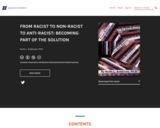
This book addresses the difference between a racist, a non-racist, and an anti-racist.
- Subject:
- Social Science
- Material Type:
- Textbook
- Author:
- Keith L. Anderson
- Date Added:
- 02/19/2021

This book addresses the difference between a racist, a non-racist, and an anti-racist.
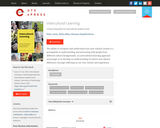
International student exchanges are an increasingly popular aspect of the internationalisation of higher education around the globe. Whether as short-term mobility projects or semester long ‘study abroad’ opportunities, the benefits of such international study experiences have been well documented.
Higher education institutions, departments and disciplines, or individual academics are often tasked with preparing students for such international experiences. Such preparation often focuses on the practical and logistical aspects of student travel, overlooking a crucial dimension of student learning.
Intercultural learning: Critical preparation for international student travel aims to take students beyond practical preparation, to equip them with a critical lens through which to view and understand their international experiences. The book leads students toward a deeper understanding of culture and cultural difference through an exploration of challenging concepts such as imperialism, racism, privilege and intercultural practice.
As an adjunct to traditional approaches, the book adds a significant and valuable dimension to the process of preparing students for international study, increasing the potential for meaningful and transformative learning experiences.

Why do affluent, liberal, and design-rich cities like Minneapolis have some of the biggest racial disparities in the country? How can designers help to create more equitable communities? Introduction to Design Equity, an open access book for students and professionals, maps design processes and products against equity research to highlight the pitfalls and potentials of design as a tool for building social justice.
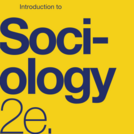
Introduction to Sociology 2e adheres to the scope and sequence of a typical, one-semester introductory sociology course. It offers comprehensive coverage of core concepts, foundational scholars, and emerging theories, which are supported by a wealth of engaging learning materials. The textbook presents detailed section reviews with rich questions, discussions that help students apply their knowledge, and features that draw learners into the discipline in meaningful ways. The second edition retains the book’s conceptual organization, aligning to most courses, and has been significantly updated to reflect the latest research and provide examples most relevant to today’s students. In order to help instructors transition to the revised version, the 2e changes are described within the preface.


This module explains the difference between stereotypes, prejudice, discrimination, and racism identifies different types of discrimination and views racial tension through a sociological lens.
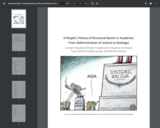
Examines the history of structural racism in Academia across numerous disciplines.
Table of Contents:
Introduction
A Tipping Point
A Look at Structural Racism by Discipline
Administration of Justice
Anthropology
Architecture
Art-Dance
Art-Drama
Art-Visual
Astronomy
Art History
Biology
Biology
Business
Career Counseling
Career Technology Education (CTE)
CTE-Graphic Design
CTE-Fire Technology
CTE-Graphic Design
CTE-Multimedia Studies
Chemistry
Communication/Film/Speech
Computer Science
Early Childhood Education
Economics
Engineering
English
English as a Second Language
Environmental Science
Ethnic Studies
Geography
Geology
Health Education
History
Human Sexuality
Languages
Library and Information Science
Mathematics
Mathematics -Statistics
Music
Music/Musical Performance/ers
Philosophy
Physics
Physics-Astrophysics
Political Science
Psychology
Sociology
Zoology
Conclusion
Acknowledgements
Reflections from the Authors
Dahmitra Jackson
Prateek Sunder
Susan Rahman
A List of Resources For Further Exploration
References

Psychology is designed to meet scope and sequence requirements for the single-semester introduction to psychology course. The book offers a comprehensive treatment of core concepts, grounded in both classic studies and current and emerging research. The text also includes coverage of the DSM-5 in examinations of psychological disorders. Psychology incorporates discussions that reflect the diversity within the discipline, as well as the diversity of cultures and communities across the globe.Senior Contributing AuthorsRose M. Spielman, Formerly of Quinnipiac UniversityContributing AuthorsKathryn Dumper, Bainbridge State CollegeWilliam Jenkins, Mercer UniversityArlene Lacombe, Saint Joseph's UniversityMarilyn Lovett, Livingstone CollegeMarion Perlmutter, University of Michigan



By the end of this section, you will be able to:Define and distinguish among prejudice, stereotypes, and discriminationProvide examples of prejudice, stereotypes, and discriminationExplain why prejudice and discrimination exist
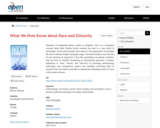
Attempts of nineteenth-century writers to establish “race” as a biological concept failed after Charles Darwin opened the door to a new world of knowledge. Yet this word already had a place in the organization of everyday life and in ordinary English language usage. This book explains how the idea of race became so important in the USA, generating conceptual confusion that can now be clarified. Developing an international approach, it reviews references to “race,” “racism,” and “ethnicity” in sociology, anthropology, philosophy, and comparative politics and identifies promising lines of research that may make it possible to supersede misleading notions of race in the social sciences.